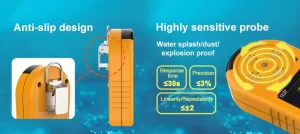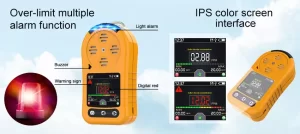Air pollution is a global environmental concern that poses significant risks to human health and the environment. Monitoring air quality is essential for understanding pollution levels, identifying sources, and implementing effective mitigation strategies. In recent years, gas sensors have emerged as a revolutionary technology in the field of air quality monitoring. These sensors play a crucial role in providing accurate and real-time data on pollutant concentrations, enabling informed decision-making and proactive actions. In this article, we will explore how gas sensors are revolutionizing air quality monitoring.
Real-time and Continuous Monitoring:
Gas sensors provide real-time and continuous monitoring of various pollutants in the atmosphere. With the advancement in sensor technology, these devices can detect and measure a wide range of gases, including nitrogen dioxide (NO2), ozone (O3), carbon monoxide (CO), sulfur dioxide (SO2), volatile organic compounds (VOCs), and particulate matter (PM). This real-time monitoring capability allows for immediate awareness of air pollution levels, facilitating prompt responses and interventions to protect public health.
Portable and Versatile:
Gas sensors are available in compact and portable designs, making them versatile for deployment in various settings. They can be used for personal exposure monitoring, indoor air quality assessment, urban air quality monitoring, and industrial emissions monitoring. The portability of gas sensors allows for flexible placement and monitoring in different locations, enabling comprehensive coverage and a better understanding of pollution patterns across diverse environments.
High Sensitivity and Accuracy:
Gas sensors are designed to be highly sensitive and accurate in detecting and measuring pollutant concentrations. They utilize advanced technologies such as electrochemical sensors, metal oxide semiconductors, and laser-based sensors to ensure reliable and precise measurements. The high sensitivity of gas sensors enables the detection of low pollutant levels, even within regulatory limits, providing a more detailed and comprehensive assessment of air quality.
Wireless Connectivity and Data Integration:
Gas sensors are often equipped with wireless connectivity capabilities, allowing for seamless data transmission and integration. This enables the creation of sensor networks for comprehensive monitoring, where multiple sensors can be deployed in different locations to collect and transmit data simultaneously. Wireless connectivity also facilitates remote data access, real-time visualization, and data analytics, enabling stakeholders to make informed decisions and take swift actions based on the latest air quality information.
Cost-effective Monitoring Solutions:
Gas sensors offer cost-effective monitoring solutions compared to traditional air quality monitoring methods. Traditional methods often involve expensive and bulky equipment, requiring trained personnel for operation and maintenance. Gas sensors, on the other hand, are more affordable, require minimal maintenance, and can be operated by non-experts. This cost-effectiveness enables wider deployment of gas sensors, leading to enhanced spatial coverage and improved understanding of air pollution patterns.
Citizen Engagement and Public Awareness:
Gas sensors have the potential to engage citizens in air quality monitoring and raise public awareness about the importance of clean air. With the availability of low-cost personal air quality monitors, individuals can track their own exposure to pollutants and contribute to crowd-sourced air pollution data. This citizen engagement not only empowers individuals to protect their health but also fosters a collective responsibility towards cleaner air and drives community-level initiatives for pollution control.
Early Warning and Emergency Response:
Gas sensors play a crucial role in early warning systems for air pollution events and emergency responses. By continuously monitoring pollutant concentrations, these sensors can detect sudden spikes or exceedances of regulatory limits. This triggers immediate alerts and notifications, enabling authorities to swiftly respond, implement emergency measures, and communicate with the public. The early warning capability of gas sensors is critical for protecting vulnerable populations and minimizing the impacts of air pollution episodes.
Conclusion:
Gas sensors are revolutionizing air quality monitoring by providing real-time, portable, and accurate measurements of pollutant concentrations. These sensors enable continuous monitoring, facilitate data integration, and empower individuals and communities to take action towards cleaner air. With their high sensitivity, versatility, cost-effectiveness, and potential for citizen engagement, gas sensors are transforming the way we understand and address the challenges of air pollution. Continued research, development, and deployment of gas sensors
 : +86 155 8830 2704
: +86 155 8830 2704 : jxdziot@gmail.com
: jxdziot@gmail.com
